The All-Scientists’ Meeting only happens every 3 years. The workshops offer an amazing smorgasbord of fresh results, new theory, tools, and opportunities to make progress on old challenges. But as the organizing committee contemplated the 2018 All Scientists’ Meeting, we also wanted to create a space for the Network to look toward the future–a way to engage the energy and imagination of a new generation of LTER scientists.
And so the LTER Idea Cafe was born. On the evening of October 1, 18 brave individuals pitched ideas that capitalized on the opportunity presented by the nearly 40 years of LTER Network science. From novel research methodologies to education and sci-art initiatives, the pitches were inspiring and entertaining. We’d like to thank all of the participants, including our hosts Katie Suding and Chris Swan.
Below you will find a description of each idea, and the name and contact information for the person who pitched it. We encourage you to reach out and get involved with ideas that resonate with you.
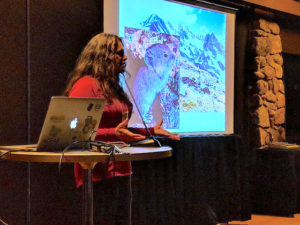
cray@colorado.edu
Pitch title: Scratch the surface
Surface temperature records have played an immeasurable role in ecological inference to date, and provide the basis for projecting many ecological processes into the future. But many species and processes involve sub-surface microhabitats with temperature profiles and lags that have not been well characterized across a variety of substrates. A synthesis of sub-surface temperature records across the LTER network would advance our understanding of the coupling between surface and sub-surface processes, improving projections for the many species that depend on sub-surface microclimates.
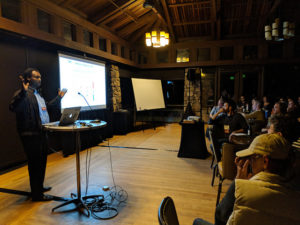
sdessu@fiu.edu
Pitch title: Mapping trends from long-term data: a new tool for discovery and application
LTER programs have collected data from diverse geography and climate. Individual programs have specific features that made them unique. There are common themes/variables across most LTER programs that can be evaluated to see how unique each of these sites are and possibly link with the possible underlying driving process. A new tool is developed at FCE-LTER to extract long-term trends and map the long term changes across variables and varying spatio-temporal scales. The tool can be used for cross-site synthesis and identify why some sits are unique while others are dancing together. As a pilot project, the most common or most critical variable among LTER programs can be mapped to observe the long term trend of the variable in space and time.
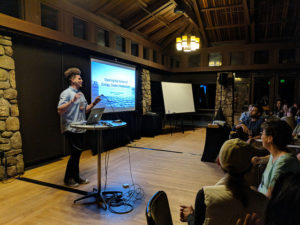
LLAMB009@fiu.edu
Pitch title: Scanning the future of ecology through the eyes of graduate students
I find that in graduate school oftentimes little emphasis is placed on what thinking about the future (unless you’re into predictive modeling). Grad students are tasked with learning the history of the field, and designing research projects to look at present-day phenomenon. But, graduate students are the leaders of tomorrow so if we want the field of ecology to advance, it matters where we envision ecology going in terms of research, right? My idea is to utilize what we know about the benefits of long-term approaches and design an initiative that gets graduate students to “Scan the Horizon” of the field of ecology, and attempt to envision future ecological breakthroughs, all through the eyes of graduate students.
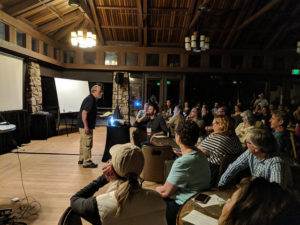
erastetter@mbl.edu
Pitch title: The Budget Deficit
An important piece of knowledge is missing from the LTER: we have never compiled C, N, and P budgets for all the terrestrial sites. Shocked? Me too. Want to do something about it? Lets hammer out a general budget structure (what stocks? e.g., vegetation litter, soil; what fluxes? e.g., photosynthesis, litterfall, soil respiration; what scale? e.g., annual, daily) and get it done!
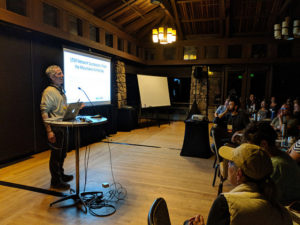
jkominos@fiu.edu
Pitch title: LTER Network Succession: From the Mountains to the Sea
Forty years of long-term ecological research have transformed our understanding of how ecosystems change over time. Our earliest sites in the LTER Network focused on forested uplands and grasslands, followed by polar, urban and agricultural, coastal, and recently open ocean. How has the succession of the LTER Network influenced and informed our ability to generalize drivers and responses of long-term ecological changes?
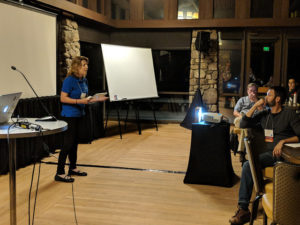
kbarbeau@ucsd.edu
Pitch title: Micronutrient limitation effects across LTER biomes
Micronutrient limitation by trace elements such as iron is a significant influence on marine ecosystems. Iron limitation or stress is also known to occur in some terrestrial and freshwater aquatic ecosystems, but it is generally thought to be less significant. Co-limitation involving trace elements is increasingly recognized in marine systems, and may be under-appreciated in terrestrial and freshwater aquatic environments, particularly under the influence of anthropogenic perturbations like N enrichment. I think it would be very interesting to initiate some cross-site experiments involving iron limitation studies, and possibly other trace elements.
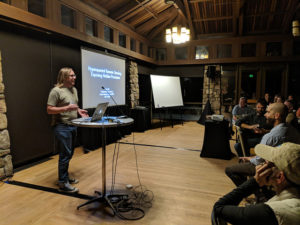
tbell@ucsb.edu
Pitch title: Hyperspectral Remote Sensing: Exposing Hidden Processes
Hyperspectral imagers let you measure a continuous reflectance spectrum for each image pixel, instead of the typical Blue/Green/Red/Near Infrared bands measured by multispectral sensors (i.e. Landsat). With this additional information, researchers can elucidate processes that may have been hidden from multispectral data, like flowering, physiological condition, and senescence. Opportunities for frequent hyperspectral observations of our focal ecosystems are nascent, including drone and satellite observations.
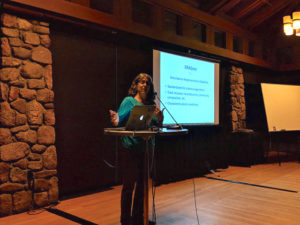
malber@uga.edu
Pitch title: Consider the disturbance-scape
Whether an ecosystem responds to a given perturbation, and the magnitude of the response, needs to be interpreted in the context of underlying abiotic gradients. Using GCE as an example, I will discuss a new way to think about perturbations and disturbance that enables us to scale that up into a cumulative disturbance-scape that can be used to assess the landscape-scale consequences of disturbance.
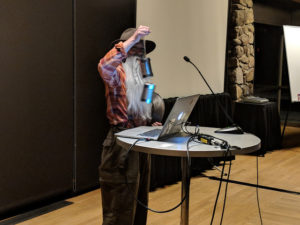
mbleigh@alaska.edu
Pitch title: There’s gold in them thar hills!
There is a groundswell of arts-humanities-science activities occurring within (and beyond) the LTER program, with numerous and diverse efforts emerging across the network. Within these hills lie gold. The treasure exists in the form of scattered and un-archived data that could help researchers determine how arts-humanities-science integration contributes to scientific outreach/education and to the advancement of fundamental long-term place-based ecological research. Data could also be mined to develop conceptual models of interdisciplinary integration approaches that foster the meaningful collaborations necessary to not only achieve these goals but, in the long run, to help society solve major social-ecological challenges.

kittred8@msu.edu
Pitch title: The Neglected Necromass
What happens when 1 of the ~10^30 prokaryotic organisms on Earth dies? It’s DNA is released into the environment, contributing to pools of extracellular DNA. In soil, extracellular DNA can comprise 40% of total DNA, inflating measurements of microbial diversity by almost half! I propose an experiment quantifying extracellular DNA across LTER sites and at multiple time points to elucidate, on average, how much DNA is from necromass and what factors (soil moisture, etc.) might control changes in microbial necromass.
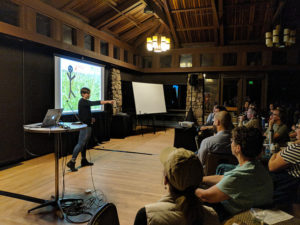
aasmus@umn.edu
Pitch title: Invitation to NutNetRAD: a new *grass*roots distributed experiment
The Nutrient Network invites you to join on the ground floor of a brand new initiative: NutNetRAD (Response After Disturbance). This new experiment will examine the predictable contingencies that govern plant community responses to physical disturbance and short-term nutrient addition. <Insert your name here> will apply nutrients, remove standing biomass, and disturb the soil in an herbaceous plant community at <Insert your site here> for three years, then watch it recover (or not). Potential questions that can be asked are, “How does the disturbance history of a site affect the rate or trajectory of its recovery?” and “Do biomass, function, riches and composition follow similar recovery trajectories?” as well as the very exciting question, “<INSERT YOUR QUESTION HERE>” Join us!
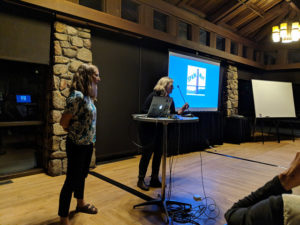
caitlin@umn.edu
Pitch title: EcoViz! Ecological data sonifications and visualizations for 21st century LTERs
The WaterViz project at Hubbard Brook and HJ Andrews has shown the potential for harnessing real-time streaming data into multi-sensory experiences that engage the reasoning, visual, and acoustical centers of the human brain. This approach improves science learning, makes patterns in large datasets more intuitive, and leads to new research insights. EcoViz will capture data from sensors at multiple LTER sites to showcase additional processes: water, nitrogen and carbon cycles. A common methodology, platform and curriculum will allow students to investigate local site data, compare it to real-time data from other network sites and historic data from their own site, and learn about long-term spatially-distributed data and ecological processes.
(Pitch developed in collaboration w/ Sarah Garlick, Mary Martin, Lindsey Rustad)
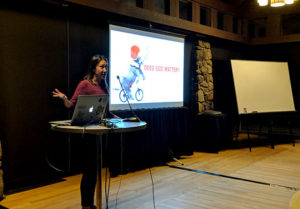
lapierrek@si.edu
Pitch title: Does size matter: A cross-site herbivore exclusion experiment
We know herbivores are drivers of important processes in many different ecosystems. But are all herbivores made equal? Currently at least two LTER sites have ongoing size-selective herbivore removal experiments, with more to follow. We invite investigators from all LTER sites to join this initiative to establish an herbivore removal network. Questions this network could address include: (1) do herbivores of different size classes differentially impact plant community composition and ecosystem function; (2) are there biogeographic patterns in the intensity of herbivore effects; and (3) is herbivore diversity related to their effect? Come discuss these ideas and more with us throughout the meeting!
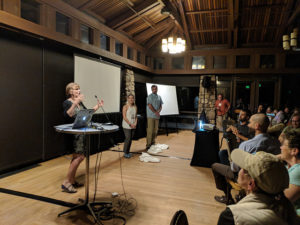
lajthak@science.oregonstate.edu
Pitch title: What makes stable soil organic matter?
Some ecosystems store a lot of soil carbon, others do not, and there is great variability across LTER sites. How can we leverage the research we do in LTER to help answer to question, what geologic, climate, and vegetation characteristics contribute to soil carbon storage?
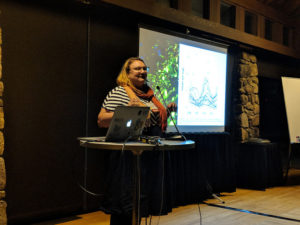
cbahlai@kent.edu
Pitch title: Bad Breakups with Data
How often are we misled by short term trends in ecological systems? How can we scale between research conducted on more typical time scales to LTER (and longer duration) findings? I, with my team, have developed a simple method- the bad breakup method- that takes your time series, breaks it up in all sorts of terrible ways, and then does simple statistics, to see what conclusions we’d reach- as if that was the only data we had. Simply put- we want to know how (long) we look at a system affects our conclusions about a system. And we want your help!
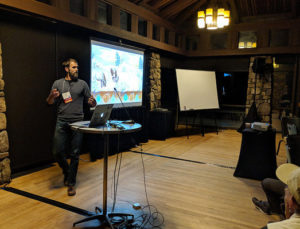
dburkepile@ucsb.edu
Pitch title: How will defaunation affect microbial communities and microbial processes?
Recent research across disparate systems such as grasslands, salt marshes, temperate forests, and coral reefs suggests that the cascading effects of defaunation shifts microbial community structure and function. The LTER network could take advantage of existing animal exlucion experiments and strategic sampling of microbiomes to help drive ideas forward about how losing ungulates, fishes, urchins, and insects cascades trickle down to microbial scales.










